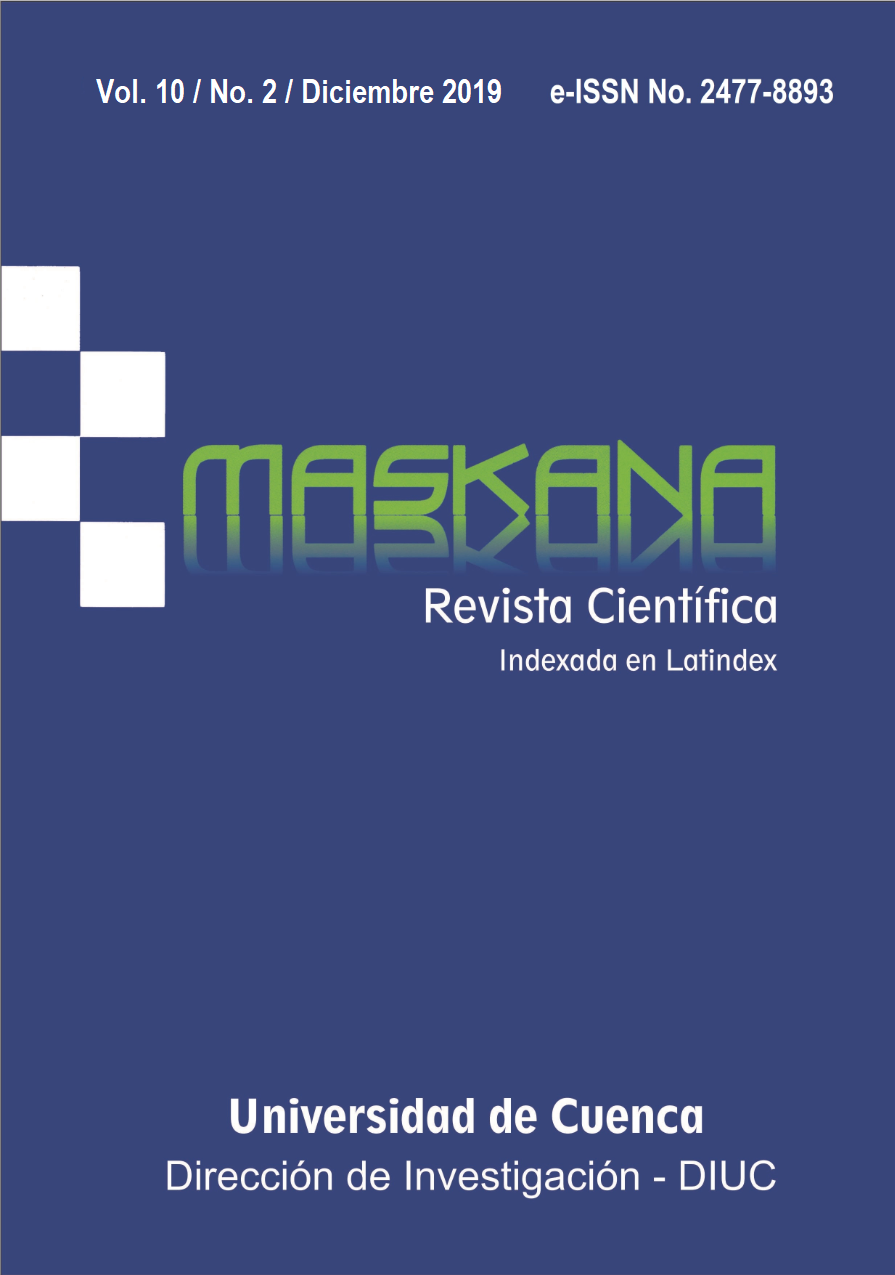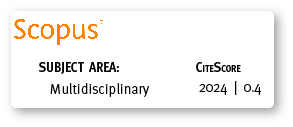Experiencias en la aplicación del modelo Flipped Learning en un curso de Tecnología Musical
DOI:
https://doi.org/10.18537/mskn.10.02.02Palabras clave:
TICs, modelo invertido, curso tecnología musical, Ableton LiveResumen
El uso creciente de las tecnologías de la información y la comunicación (TIC) ha modificado muchas tareas y sobre todo alterado nuestro comportamiento. En este contexto, el modelo Flipped Learning (FL) ofrece una alternativa de aprendizaje prometedora que vincula el entorno de aprendizaje con estos nuevos comportamientos del estudiante al modificar el modelo de instrucción tradicional. El modelo FL incluye actividades en las que los estudiantes revisan individualmente material en línea y desarrollan proyectos y tareas en grupos en las aulas. El objetivo de este estudio fue evaluar el modelo de aprendizaje invertido en educación artística, específicamente cómo la introducción de este modelo afecta el aprendizaje de los estudiantes de la Universidad de Cuenca que asisten al curso de tecnología musical. Los resultados de este estudio destacan los beneficios relacionados con el fomento del aprendizaje activo y la aceptación del material desarrollado para la implementación del modelo FL. A pesar de la evaluación positiva general del enfoque de FL, los autores sugieren que se realicen más estudios, con una población estudiantil más numerosa, para remediar los inconvenientes identificados durante el proyecto, lo que facilitará el uso del modelo de FL en otros cursos.
Descargas
Métricas
Citas
Bush, M. D. (2013). Educational technology points of inflection: what MOOCs, flipped classrooms, and OLPC teach us about individualization of learning. Educational Technology, 53(6), 60-63.
Fidalgo-Blanco, A., Martinez-Nuñez, M., Borrás-Gene, O., & Sanchez-Medina, J. J. (2017). Micro flip teaching - An innovative model to promote the active involvement of students. Computers in Human Behavior, 72, 713-723. https://doi.org/10.1016/j.chb.2016.07.060
Flipped Learning Network. Definition of Flipped Learning. (n.d.). Retrieved from https://flippedlearning.org/definition-of-flipped-learning/
Garrison, D., & Kanuka, H. (2004). Blended learning: Uncovering its transformative potential in higher education. The Internet and Higher Education, 7(2), 95-105. https://doi.org/10.1016/j.iheduc.2004.02.001
Goodwin, B., & Miller, K. (2013). Evidence on flipped classrooms is still coming in. Educational Leadership, 70(6), 78-80.
Humante-Ramos, P., García-Peñalvo, F., & Conde-González, M. Á. (2016). Encuesta sobre el uso de Internet, servicios sociales y herramientas tecnológicas de los estudiantes de la carrera de ingeniería en sistemas y computación en la Facultad de Ingeniería de la UNACH [Survey on the use of Internet, social media, and technological tools of students in the computer engineering degree at the School of Engineering of the National University of Chimborazo -UNACH] [Data set]. Figshare. https://doi.org/10.6084/m9.figshare.3413869
Heeseung, C., Jeongeun, K., Kyung-Sook, B., Yeon-Hwan, P., Nam-Ju, L., & Chanhee, K. (2015). Applying the Flipped Learning Model to an English-Medium Nursing course. Journal of Korean Academy of Nursing, 45(6), 939-48. https://doi.org/10.4040/jkan.2015.45.6.939
Hussey, H. D., Richmond, A. S., & Fleck, B. (2015). A primer for creating a flipped psychology course. Psychology Learning & Teaching, 14(2), 169-185. doi:10.1177/1475725715592830
Hootsuite Media Inc. (n.d.). Digital in 2018 in Southern America. Retrieved from: https://hootsuite.com/es/pages/digital-in-2018
Kim, H. S., Kim, M. Y., Cho, M., & Jang, S. J. (2017). Effectiveness of applying flipped learning to clinical nursing practicums for nursing students in Korea: A randomized controlled trial. International Journal of Nursing Practice, 23(5), 1-10. https://doi.org/10.1111/ijn.12574
Kim, J. A., Heo, H. J., & Lee, H. (2015). Effectiveness of flipped learning in Project Management Class. International Journal of Software Engineering and Its Applications, 9(2), 41-46.
Lee, J., Lim, C., & Kim, H. (2016). Development of an instructional design model for flipped learning in higher education. Educational Technology Research and Development, 65(2), 427-453. https://doi.org/10.1007/s11423-016-9502-1
Marín-Juarros, V. (2014). Modelos de rediseño de acciones formativas en el entorno virtual de enseñanza-aprendizaje [Redesign models for training activities in online teaching and learning]. Tesis doctoral, Departament de Pedagogia Aplicada i psicología de l’Educació, Universitat de les Illes Balears, 549 pp. https://www.researchgate.net/publication/273452427_Modelos_de_rediseno_de_acciones_formativas_en_el_entorno_virtual_de_ensenanza-aprendizaje_Diseno_y_experimentacion_de_estrategias_metodologicas_de_integracion_de_los_entornos_institucionales_y_abierto
Mason, G. S., Shuman, T. R., & Cook, K. E. (2013). Comparing the Effectiveness of an Inverted Classroom to a Traditional Classroom in an Upper-Division Engineering Course. IEEE Transactions on Education, 56(4), 430-435. https://doi.org/10.1109/TE.2013.2249066
Mennella, T. A. (2016). Comparing the efficacy of flipped vs. alternative active learning in a College Genetics Course. The American Biology Teacher, 78(6), 471-479. https://doi.org/10.1525/abt.2016.78.6.471
Murphy, J., Chang, J.-M., & Suaray, K. (2016). Student performance and attitudes in a collaborative and flipped linear algebra course. International Journal of Mathematical Education in Science and Technology, 47(5), 653-673. https://doi.org/10.1080/0020739X.2015.1102979
Noor-Akmal, S., I. (2016). Effectiveness of team-based learning in teaching medical genetics to medical undergraduates. Malaysian Journal of Medical Sciences 23(2), 73-77.
O’Connor, E. E., Fried, J., McNulty, N., Shah, P., Hogg, J. P., …, et al. (2016). Flipping radiology education right side up. Academic Radiology, 23(7), 810-22. http://dx.doi.org/10.1016/j.acra.2016.02.011
Oh, J., Kim, S., Kim, S., & Vasuki, R. (2017). Evaluation of the effects of flipped learning of a nursing informatics course. The Journal of Nursing Education, 56(8), 477-83. https://doi.org/10.3928/01484834-20170712-06
Pence, P. L. (2016). Flipping a first-year medical-surgical associate degree registered nursing course: A 2-year pilot study. Teaching and Learning in Nursing, 11(2), 52-57. https://doi.org/10.1016/j.teln.2015.12.006
Sams, A., & Bergmann, J. (2013). Flip your students' learning. Educational Leadership, 70(6), 16-20.
Smith, C. M., & McDonald, K. (2013). The flipped classroom for professional development: Part II. Making podcasts and videos. The Journal of Continuing Education in Nursing, 44(11), 486-487. https://doi.org/10.3928/00220124-20131025-93
Descargas
Publicado
Cómo citar
Número
Sección
Licencia
Copyright © Autors. Creative Commons Attribution 4.0 License para cualquier artículo enviado a partir del 6 de junio de 2017. Para los manuscritos presentados anteriormente, se utilizó la licencia CC BY 3.0.
![]()
Usted es libre de:
 |
Compartir — compartir y redistribuir el material publicado en cualquier medio o formato. |
 |
Adaptar — combinar, transformar y construir sobre el material para cualquier propósito, incluso comercialmente. |
Bajo las siguientes condiciones:
 |
Atribución — Debe otorgar el crédito correspondiente, proporcionar un enlace a la licencia e indicar si se realizaron cambios. Puede hacerlo de cualquier manera razonable, pero de ninguna manera que sugiera que el licenciador lo respalda a usted o a su uso. |
| Sin restricciones adicionales: no puede aplicar términos legales o medidas tecnológicas que restrinjan legalmente a otros a hacer cualquier cosa que permita la licencia. |
Mayor información sobre este acuerdo de autoría y licencia, transferencia de derechos o solicitudes de reproducción, pueden ser consultados en este enlace.









